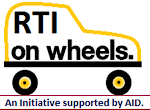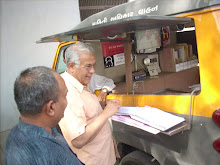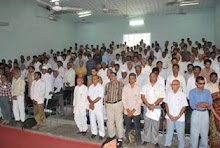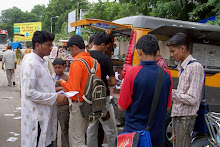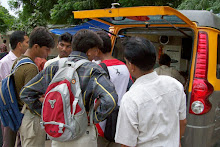The Hindu: New Delhi: Friday,
20 December 2024.
According to data obtained by The Hindu through the Right to Information Act, of the 1,30,101 students enrolled into all 407 functional EMRSs as of October this year, 4,480 belong to PVTG communities, which amounts to about 3.4% of the total student population at these schools
About four years after the
Centre introduced a sub-quota of 5% for the Particularly Vulnerable Tribal
Groups (PVTG) in admissions to Eklavya Model Residential Schools (EMRS) for
tribal students across the country, government data show that schools are struggling
to meet this quota with just 3.4% of all EMRS students belonging to PVTG
communities even as the number of PVTG students dropping out of EMRS has been
rising for the last three years consecutively.
According to data obtained by The Hindu through the Right to Information Act, of the 1,30,101 students enrolled into all 407 functional EMRSs as of October this year, 4,480 belong to PVTG communities, which amounts to about 3.4% of the total student population at these schools.
The data showed that States that had the most students Madhya Pradesh, Chhattisgarh, Odisha, Gujarat were struggling to meet the 5% PVTG student quota. In Madhya Pradesh, PVTG students account for 3.8% of the total students, in Chhattisgarh they comprise 2.74% of the student population, whereas in Gujarat, just 21 students out of the total 10,688 students belong to PVTG communities.
This comes even as government data tabled in the Lok Sabha on Thursday showed that more and more PVTG students had been dropping out of EMRSs for the last three years. Tabling this data in response to a question from DMK MP Kanimozhi, the Tribal Affairs Ministry said that in 2021-22, 10 PVTG students had dropped out. This had increased to 14 in 2022-23, and to 18 in the following academic year.
“Infrastructure gaps, teacher shortage, pressure to work for earning, quality of education, are some of the reasons for drop out,” the reply tabled by Union Minister of State for Tribal Affairs Durgadas Uikey said.
Centralised administration
The provision to introduce a 5% sub-quota for PVTG students in admissions to EMRSs was introduced after the administration of the schools was centralised by setting up the National Education Society for Tribal Students in 2019. The first set of guidelines issued by NESTS in 2020 accommodated this in the reservation matrix.
While most States are struggling to meet the 5% PVTG quota, the data obtained by The Hindu showed that some States had managed to surpass the 5% mandate. In Tamil Nadu’s EMRSs, PVTGs comprise 8.36% of total students; in Jharkhand, this percentage is at 7.48%; and in Andhra Pradesh, it is 12.91%.
But at the same time, in neighbouring Telangana, PVTG students comprise just 0.66% of the total student population of EMRSs.
According to latest available population estimates, Madhya Pradesh, Maharashtra, Andhra Pradesh, Jharkhand, and Tamil Nadu are the States with the greatest number of PVTGs. In Maharashtra’s EMRSs, PVTGs comprise just 1.28% of the student population and in Odisha, this is at 3.45%.
The government has said that it has been working on the issues leading to dropouts in EMRSs across the country. To standardise quality of teaching and address staff shortages, the recruitment of staff was centralised in 2023. Further, the Ministry has told a Parliamentary Standing Committee on Social Justice and Empowerment last month that it has identified 211 EMRSs that need to be upgraded after a detailed study was done.
According to data obtained by The Hindu through the Right to Information Act, of the 1,30,101 students enrolled into all 407 functional EMRSs as of October this year, 4,480 belong to PVTG communities, which amounts to about 3.4% of the total student population at these schools
 |
| Representative image. Eklavya residential school of Dammapet mandal of Bhadradri Kothagudem district in Telangana | Photo Credit: RAO GN |
According to data obtained by The Hindu through the Right to Information Act, of the 1,30,101 students enrolled into all 407 functional EMRSs as of October this year, 4,480 belong to PVTG communities, which amounts to about 3.4% of the total student population at these schools.
The data showed that States that had the most students Madhya Pradesh, Chhattisgarh, Odisha, Gujarat were struggling to meet the 5% PVTG student quota. In Madhya Pradesh, PVTG students account for 3.8% of the total students, in Chhattisgarh they comprise 2.74% of the student population, whereas in Gujarat, just 21 students out of the total 10,688 students belong to PVTG communities.
This comes even as government data tabled in the Lok Sabha on Thursday showed that more and more PVTG students had been dropping out of EMRSs for the last three years. Tabling this data in response to a question from DMK MP Kanimozhi, the Tribal Affairs Ministry said that in 2021-22, 10 PVTG students had dropped out. This had increased to 14 in 2022-23, and to 18 in the following academic year.
“Infrastructure gaps, teacher shortage, pressure to work for earning, quality of education, are some of the reasons for drop out,” the reply tabled by Union Minister of State for Tribal Affairs Durgadas Uikey said.
Centralised administration
The provision to introduce a 5% sub-quota for PVTG students in admissions to EMRSs was introduced after the administration of the schools was centralised by setting up the National Education Society for Tribal Students in 2019. The first set of guidelines issued by NESTS in 2020 accommodated this in the reservation matrix.
While most States are struggling to meet the 5% PVTG quota, the data obtained by The Hindu showed that some States had managed to surpass the 5% mandate. In Tamil Nadu’s EMRSs, PVTGs comprise 8.36% of total students; in Jharkhand, this percentage is at 7.48%; and in Andhra Pradesh, it is 12.91%.
But at the same time, in neighbouring Telangana, PVTG students comprise just 0.66% of the total student population of EMRSs.
According to latest available population estimates, Madhya Pradesh, Maharashtra, Andhra Pradesh, Jharkhand, and Tamil Nadu are the States with the greatest number of PVTGs. In Maharashtra’s EMRSs, PVTGs comprise just 1.28% of the student population and in Odisha, this is at 3.45%.
The government has said that it has been working on the issues leading to dropouts in EMRSs across the country. To standardise quality of teaching and address staff shortages, the recruitment of staff was centralised in 2023. Further, the Ministry has told a Parliamentary Standing Committee on Social Justice and Empowerment last month that it has identified 211 EMRSs that need to be upgraded after a detailed study was done.




